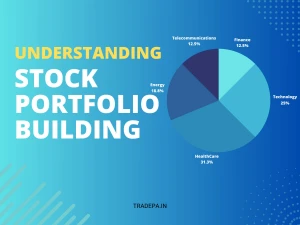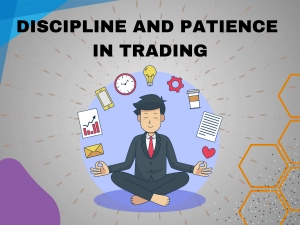How to Use a Trading Journal to Improve your Trading skills

Trading journals are the unsung heroes of the trading world. They might seem like just a bunch of notes or numbers, but they’re your secret weapon in the quest for better trading. They’re like your personal coach, guiding you toward smarter decisions and helping you learn from every move you make in the market. In this article, we’ll delve into the world of trading journals, uncovering why they’re so crucial and giving you a roadmap to use them effectively.
Importance of Trading Journals
Let’s talk business - why bother with a trading journal, right? Well, think of it as your trading diary, your personalized playbook. It’s not just about jotting down what you did; it’s about diving deep into why you did it and how it worked out. Reflecting on your trades through a journal isn’t just a good idea; it’s a game-changer. These journals offer a clear picture of your strengths and weaknesses, helping you double down on what works and fix what doesn’t. Plus, when the market throws you a curveball, your journal’s got your back—it’s a roadmap through the ups and downs, a place where you can track your growth and adapt your strategies.
Understanding a Trading Journal
Now, what exactly is this mystical trading journal? It’s more than scribbling down numbers; it’s your trading companion. First, it’s about defining your journal’s purpose—why are you keeping it? Think of it as a toolbox filled with sections for entry/exit points, trade setup details, and even a spot for monitoring your emotional state. Each part plays a role in making your trading journey more transparent and more rewarding. The entry/exit points section? That’s like a treasure map—it shows you where you entered a trade and where you left, helping you understand your timing better. And those trade setup details? They’re the blueprint of your strategy, giving you a play-by-play breakdown of what worked and what didn’t. Emotional state monitoring? That’s your emotional compass—keeping you in check and ensuring you make decisions clearly.
Components of an Effective Trading Journal

Let’s break it down further. You’ve got your trading journal, but what makes it tick? It’s all about those essential components that turn it into a powerhouse tool for your trading game.
- Entry/Exit Points: Consider this section your trading GPS. It pinpoints where you got into a trade and where you got out. It’s not just about the numbers; it’s about understanding your timing, your instincts, and how they influence your trades.
- Trade Setup Details: This is where the nitty-gritty details of your trade live. Your strategy, indicators used, market conditions—you name it. It’s your go-to when you want to replicate a winning trade or tweak a losing one.
- Emotional State Monitoring: This section might be the unsung hero of your journal. It’s where you jot down how you felt during a trade—excited, nervous, confident, or hesitant. Understanding your emotions is critical to making more precise, more rational decisions in the market.
Combining these elements in your journal is like having a personal coach by your side, analyzing your moves, and helping you evolve as a trader. By understanding these core components of a trading journal, you’re not just recording data but creating a tool that sharpens your trading skills. It’s your playbook, your secret weapon against market unpredictability. As we dive deeper into this article, we’ll unravel the steps to set up your journal effectively and leverage its power to boost your trading game.
Setting Up Your Trading Journal
So, you’re ready to dive into the world of journaling for better trading, but where do you start? Let’s talk about setting up your trading journal—the foundation for honing your skills in the market.
Choosing the Right Format
The first fork is deciding whether to go digital or stick to a physical journal. Each has its perks. Digital journals offer flexibility and easy access, while a physical journal might feel more personal and tangible. Consider your preferences—do you like typing away or the satisfaction of jotting things down on paper?
Designing Your Journal Template
Once you’ve chosen your format, it’s time to customize. Your journal is your canvas, so make it work for you. Think about what sections are crucial for your trading style. Do you want a dedicated space for technical analysis or a section to note your trade psychology? Tailoring your template to fit your needs is the key to making it an effective tool.
Tracking Performance

Let’s talk about the juicy stuff—the metrics that’ll give your journal real firepower. Tracking Performance Metrics is where the magic happens. You’re diving into your profits and losses, dissecting each trade to understand what went right or wrong.
- Profit and Loss Analysis: It’s not just about the numbers; it’s about understanding the story behind them. What strategies led to profits, and where did losses stem from?
- Win/Loss Ratio: This ratio is like a compass guiding your trades. It helps you gauge the success rate of your trades and whether your strategies are on the mark.
- Risk-Reward Ratios: This metric is the guardian of your risk management. It tells you if your potential rewards outweigh the risks, keeping your trades in check.
- Psychological Metrics: Now we’re delving into the mind game of trading. Tracking your emotional responses during trades helps you understand your reactions and make more rational decisions.
By integrating these metrics into your journal, you’re not just recording numbers; you’re building a toolkit to analyze your trading patterns, strengths, and areas for improvement.
Establishing a Routine

Consistency is the game’s name for journaling for trading success. Let’s lay down the steps to weave journaling into your daily and weekly routines.
Daily Entries and Reviews
Make journaling a daily ritual. Just like brushing your teeth, it’s a habit that pays off. Log your trades, note your emotional state, and reflect on each trade’s outcome. This daily review keeps you in tune with your progress and helps spot trends or issues early on.
Weekly/Monthly Analysis
Zoom out a bit. Take a look at the bigger picture by conducting weekly or monthly analyses. This deep dive into your journal entries helps you see patterns that might not be apparent daily. It’s like stepping back to see the whole canvas after focusing on individual brushstrokes.
Fine-tuning Strategies Based on Journal Insights
This is where the real magic happens. Your journal isn’t just a log; It’s like a treasure chest filled with valuable insights waiting to be unearthed. Analyze your entries, spot what’s working, and tweak what’s not. It’s the constant refining of your strategies based on accurate data that sets you up for success in the market.
Learning from Past Trades
Your journal is a goldmine of knowledge from your past trades—both the wins and the losses. Let’s tap into that wealth of information.
Reviewing Successful Trades

Success leaves clues. Dive into your winning trades, sift through the details, and spot the patterns. What strategies brought you success? Documenting these winning moves is like creating a playbook of your best trading strategies.
Analyzing Unsuccessful Trades
The tough trades that didn’t go as planned—are where the real lessons hide. Analyze what went wrong, pinpoint the mistakes, and learn from them. Each unsuccessful trade holds a nugget of wisdom that can propel your growth as a trader.
Overcoming Emotional Biases
Trading isn’t just about charts and numbers; it’s also a battle against our emotions. Let’s explore how your journal can be your ally in navigating these emotional waters.
Managing Fear and Greed
Trading decisions can fall prey to the havoc wreaked by two powerful emotions: fear and greed. Your journal mirrors and reflects your emotional state throughout your trades. Recognizing when fear or greed influences your choices is the first step to managing them effectively. The journal acts as a checkpoint, helping you step back and make more rational choices.
Dealing with Loss Aversion
Losses sting, and our instinct is to avoid them at all costs. But your journal can be a guiding light here. By logging your emotional responses to losses, you understand your aversion better. It’s about reframing losses as opportunities for growth rather than just setbacks.
Using Journal Insights to Counter Emotional Decision-making
Your journal is your emotional GPS. When emotions cloud your judgment, your journal entries act as a reality check. It’s like having a conversation with your rational self. By referring to past entries, you can counteract emotional biases and make more level-headed decisions in the market.
Continuous Improvement Strategies
Now that you’ve made a solid foundation with your journal, it’s time to supercharge your progress. Let’s explore some strategies for continuous improvement.
Implementing Feedback from Journal Analysis
Your journal isn’t just a record; it’s a feedback loop for your trading strategies. Take the insights gained from analyzing your journal and put them into action. If a particular strategy consistently leads to success, integrate it more into your approach. Similarly, if you identify weaknesses, develop plans to address and improve upon them based on your journal’s feedback.
Experimenting with New Approaches
The market is ever-evolving, and so should your strategies. Your journal gives you the freedom to experiment. Try new indicators, test different time frames, or explore alternative approaches. Document these experiments in your journal, noting their impact on your trades. It’s all about embracing a mindset of continuous learning and adaptation.
Seeking Mentorship or Peer Review

Sometimes, an external perspective can be a game-changer. Consider seeking mentorship or engaging in peer review within trading communities. Sharing insights from your journal with a mentor or fellow traders can provide valuable feedback. They might spot nuances or offer advice that your journal may not reveal. Engaging and learning from others can significantly enrich your trading journey.
Integrating Technology for Enhanced Analysis
Leveraging technology can significantly empower and enhance your trading journal in this digital age. Let’s explore how leveraging tech can take your journaling to the next level.
Numbers on their own might seem daunting, but with data visualization tools, they become your storytelling companions. Visual representations like graphs or charts from your journal data offer a clear and concise way to spot trends, patterns, and correlations in your trading performance. They turn raw data into actionable insights at a glance.
Conclusion
As we draw the curtains on our journey through trading journals, let’s recap the key takeaways and gear up for a successful trading future.
Your trading journal isn’t just a notebook; it’s your compass in the trading world. It helps you track performance, understand your emotions, and fine-tune your strategies. By diligently maintaining your journal, you gain invaluable insights that pave the way for informed, strategic decisions in the market.
Consistency is the secret sauce. The daily ritual of logging your trades, reflecting on your decisions, and analyzing your strategies truly elevates your trading game. Embrace journaling as an integral part of your trading routine, and watch how it transforms your approach.
Remember, your journal isn’t just a record of numbers; it’s a treasure trove of your trading journey. Implement the strategies discussed—analyze your trades, learn from successes and failures, manage your emotions, and adapt continuously. Embrace the power of technology to streamline your journaling process and leverage AI for deeper insights. By doing so, you’re not just improving your trading skills; you’re sculpting a path toward consistent growth and success in the dynamic world of trading. Happy trading, and may your journal be your guiding light!








